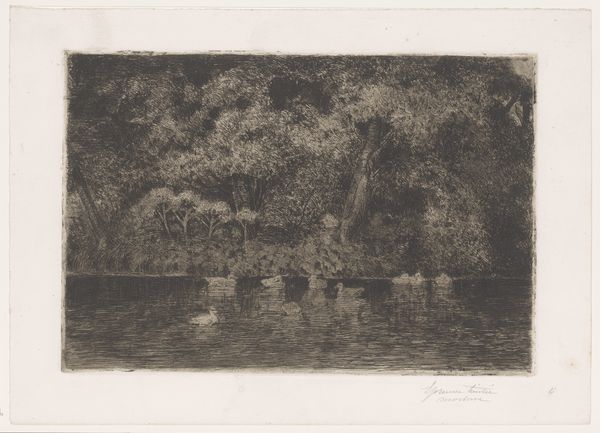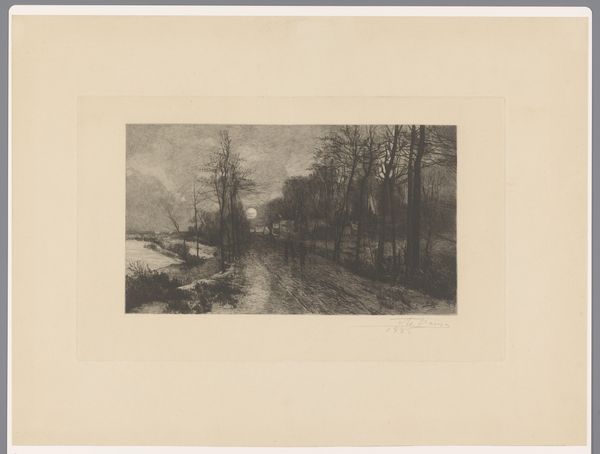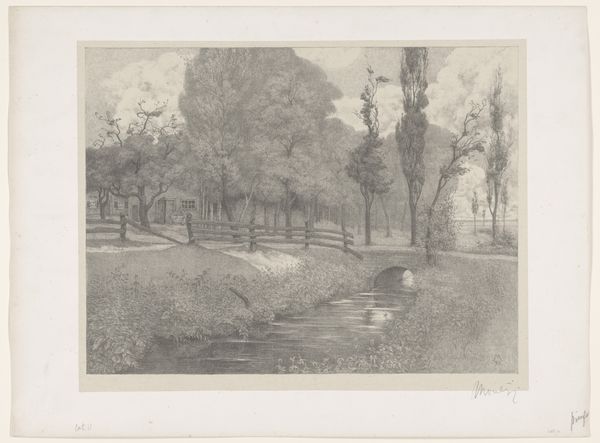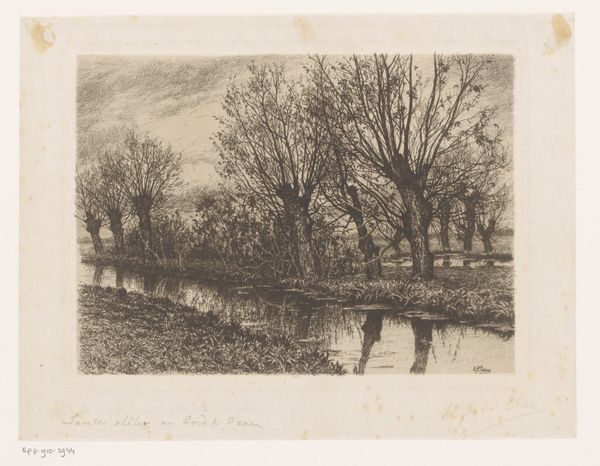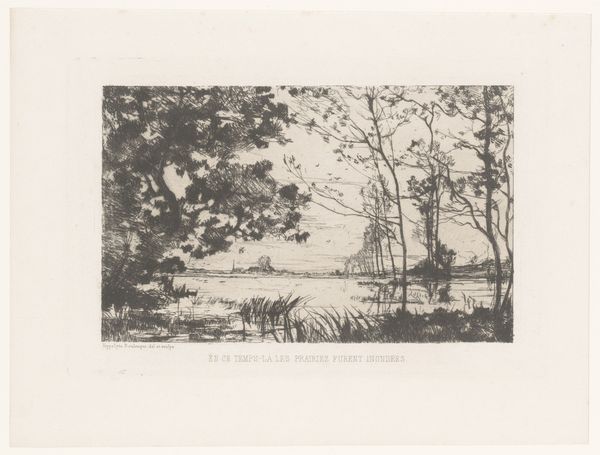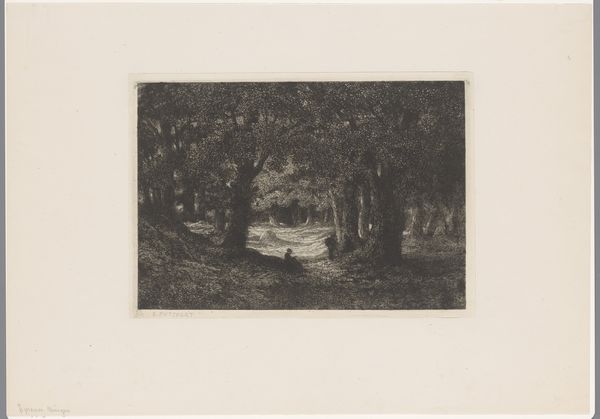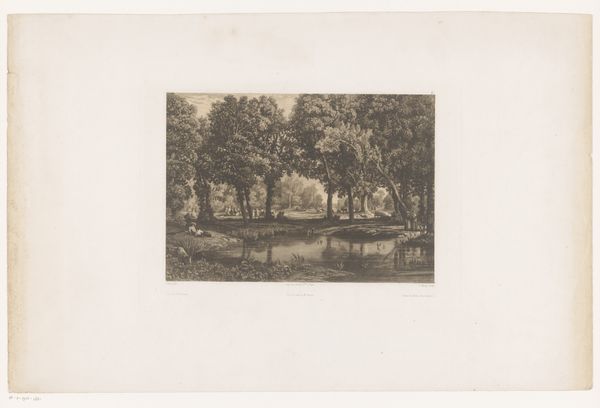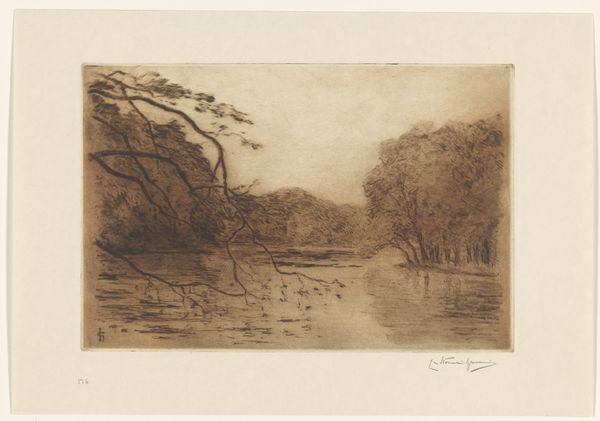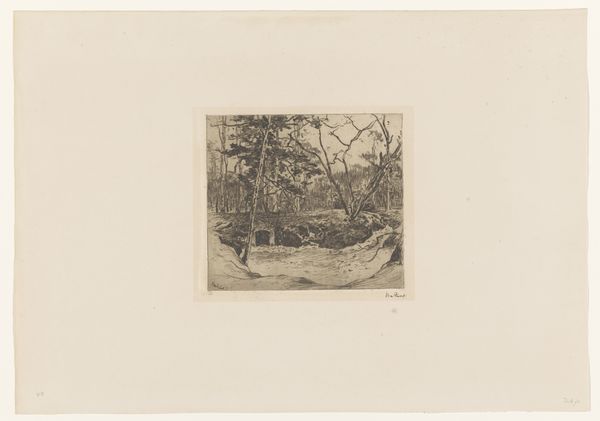
Dimensions: Sheet: 7 11/16 × 10 1/8 in. (19.5 × 25.7 cm)
Copyright: Public Domain
Editor: We’re looking at "The Mouth of a Brook, No. 1," an etching by Sir Francis Seymour Haden, created in 1859. It has a contemplative quality. I'm particularly struck by the textures he achieved using etching. What catches your eye when you look at this piece? Curator: Immediately, I observe the sophisticated manipulation of line. Consider how the varying densities of hatching articulate spatial recession and atmospheric effect. The composition demonstrates a keen understanding of formal balance, doesn't it? Editor: It does, in a very subtle way. Could you expand on the 'formal balance'? Curator: Observe the distribution of tonal weight. The dark cluster of trees on the left is counterbalanced by the singular, luminous tree trunk on the right, creating a dynamic tension. Note also the water at the base - a flat horizontal that pushes the detailed foliage back. This suggests that Haden used formal elements strategically, going beyond a mere depiction of nature. He guides the viewer's gaze. How does that make you think differently about the 'contemplative' feeling? Editor: I see your point. It is structured to feel that way; it is not accidental, but crafted. I suppose I focused on what it depicts and less on the active compositional qualities. It almost feels artificial. Curator: Artificiality is an interesting observation, since, in fact, Haden was consciously choosing to focus on composition over an exact representation. Ultimately, however, it reveals something significant. This artwork serves as a valuable case study of the artist's manipulation of medium to communicate, as you said initially, a kind of quiet meditation through form itself. Editor: I didn’t think about that element. Thanks.
Comments
No comments
Be the first to comment and join the conversation on the ultimate creative platform.
